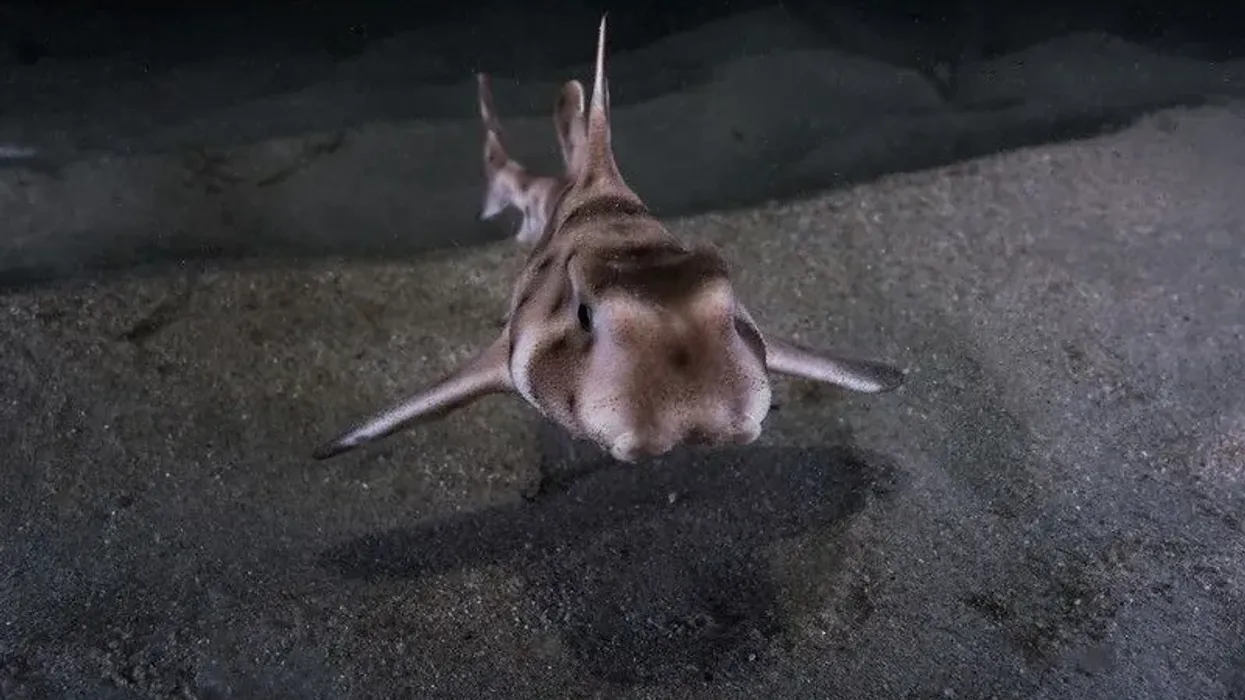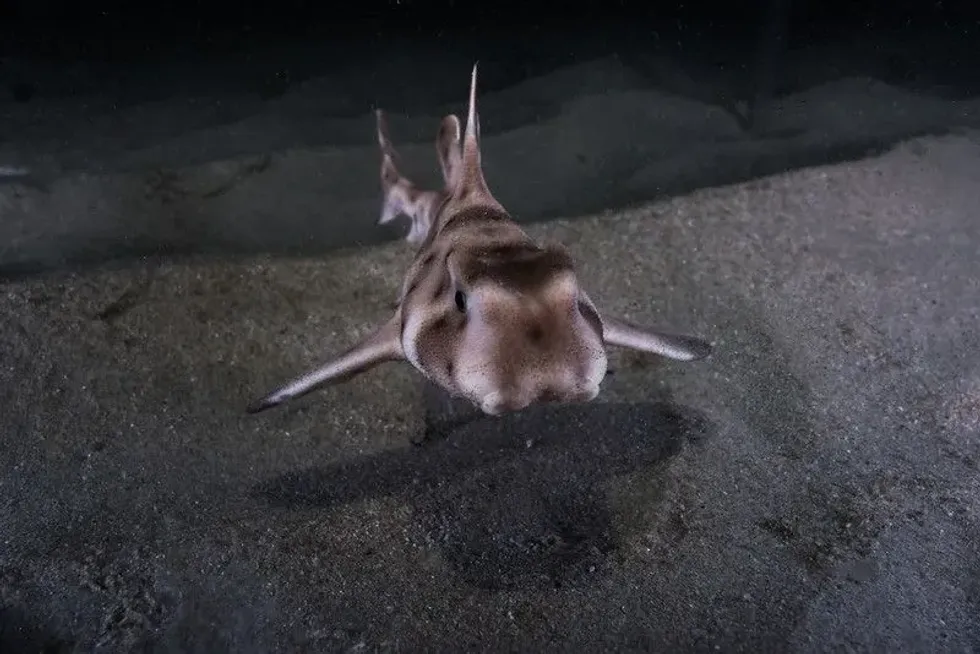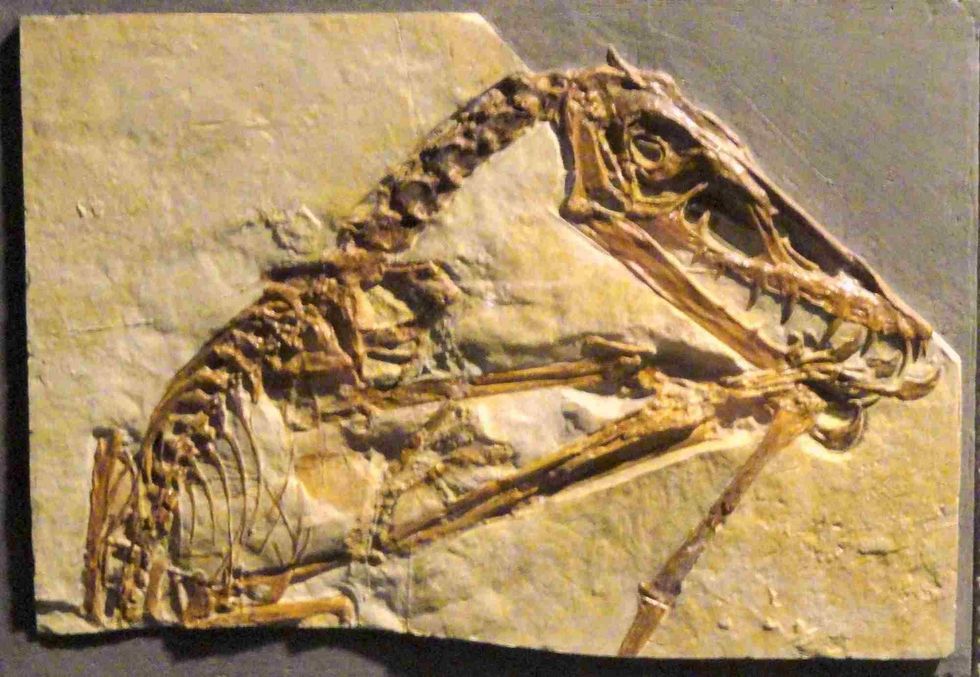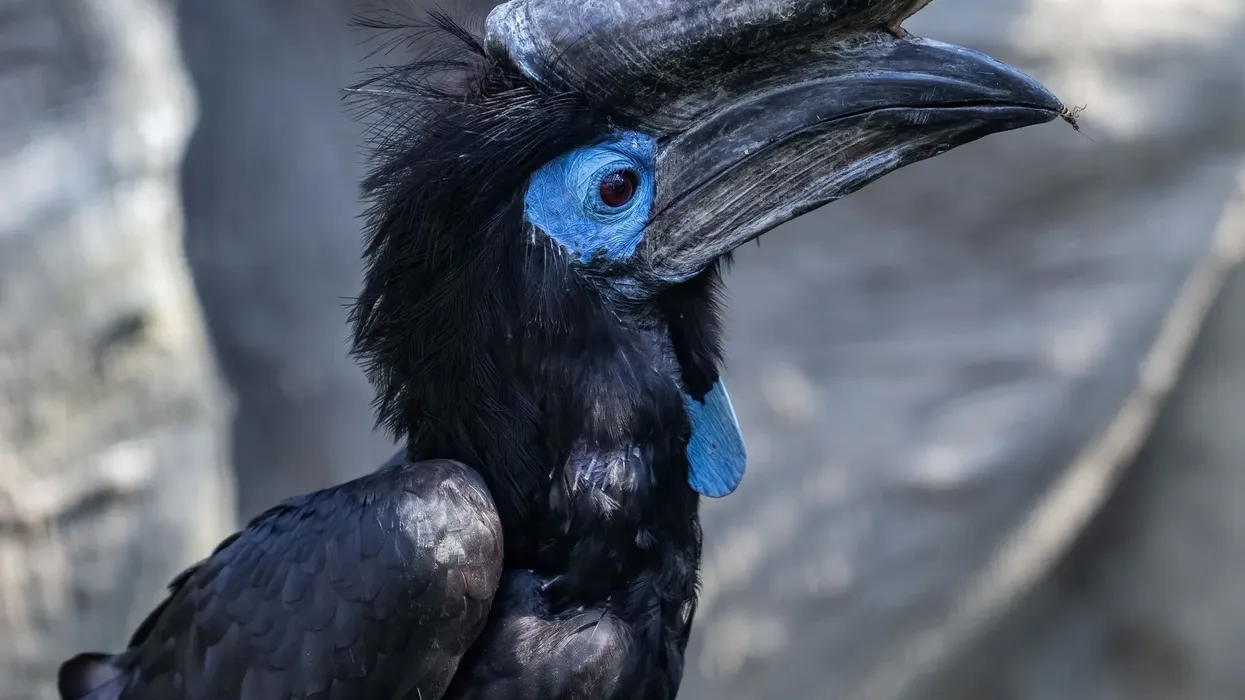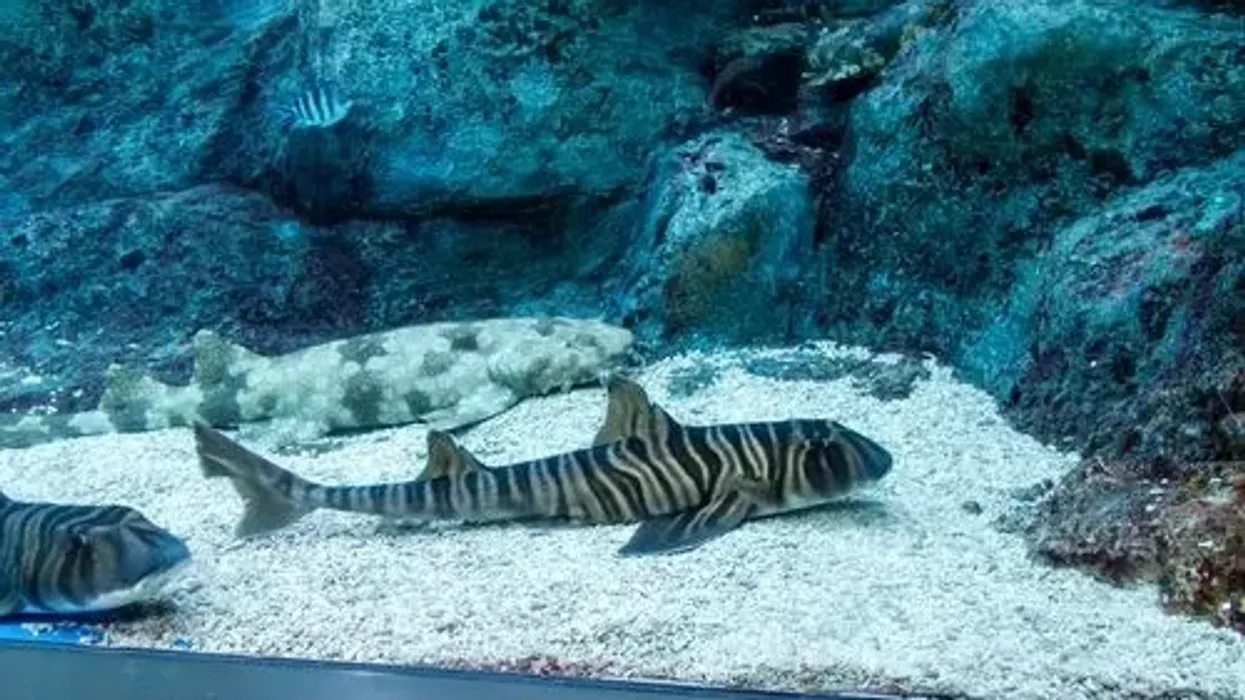Fun Horn Shark Facts For Kids

You must have seen rhinos with large horns, but ever wondered what a horn shark would look like? Well, they are tiny creatures with iridescent spots all over their body and appear so cute that you may even want to keep them as pets.
Their scientific name is horn shark Heterodontus francisci. These majestic predators reside alongside kelp beds at the bottom of coastal waters and seas. Horn shark Heterodontus francisci have been regarded one of the most beautiful sharks of the world.
Horn shark lays around 24 eggs after every two years. Their egg cases are best known for their extremely beautiful spiral shape.
In order to save themselves from larger predators in such flat regions of the sea, young sharks use the feeding pits made by sting rays. Read on to find more details about California horn shark. After reading this article on spiral horn shark, you may also look want to look at swai fish facts and Caribbean reef shark facts.
Horn Shark Interesting Facts
What type of animal is a Horn Shark?
The horn shark is a species of bullhead shark belonging to the family of Heterodontidae found in the coastal waters off the western coast of North America, stretching from California to the Gulf of California.
Like other bullhead sharks, they have a wide head which is short in size and have a blunt snout with very significant supraorbital ridges around the eyes.
Typically measuring 1 m in length, horn sharks are recognized by their blunt heads short in size having ridges around its eyes, two dorsal fins located high with large spines, and a brown gray coloration with various dark and small spots.
What class of animal does a horn shark belong to?
Horn shark being a species of bullhead sharks belong to the class of fishes or Chondrichthyes and lay a maximum of 24 eggs every other year. They have the typical body structure of bullhead sharks with some distinguishable features.
How many horn sharks are there in the world?
There is no absolute measure of the total number of horn sharks in the world. However, they have no potential threats except from large fishes and sport hunters who make ornaments out of the horn sharks. Since they have no commercial importance, their conservation status is of least concern.
Where does a Horn Shark live?
Horn sharks, belonging to the species of bullhead sharks, live in the continental shelf of the eastern Pacific Ocean, stretching from the coast of California to the Gulf of California via Baja California and Monterey Bay southward.
The young ones of this species prefer to live in deeper sandy flats while the adults are best suited in shallow rocky reefs and algal beds.
They are harmless to humans unless threatened and harassed and possess no potential threats.
What is a horn shark's habitat?
The horn shark inhabits the continental shelf of the eastern Pacific Ocean, stretching from the coast of California to the Gulf of California via Baja California and Monterey Bay southward.
They change their depth of residence according to the seasons, living at a depth of 2-11 m (6.6-36.1 ft) for most of the time of the year while migrating deeper than 30 m (98ft) during winters.
Horn sharks prefer temperatures warmer than 20°C (68°F) in contrast to its inhabitant, the swell shark which are more cold-tolerant.
Horn Sharks are often found in the caves of Oceans as deep as 200 m (660 ft). As this species of shark matures, they tend to shift into shallower water amid complex rocky reefs or algae beds.
Who do horn sharks live with?
Horn sharks are usually found solitary and few cases of small groups have been recorded.
This species of sharks are known for resting motionless during the day, inside the caves or crevices or within thick mats of algae and roam actively after dusk above the reef in search of food. They are preyed upon by larger fishes and the northern elephant seal.
They are at times captured by bald eagles at Catalina Island and act as host to many parasites including tapeworms Acanthobothrium bajaensis, the copepod Trebius heterodonti and the nematode Echinocephalus pseudouncinatus.
How long does a horn shark live?
Horn sharks belong to the species of bull sharks with a conservation status of least concern. Hence, they have a life expectancy of 25 years with some living up to 50 years.
How do they reproduce?
Horn Sharks are known for reproducing oviparously in which mating usually occurs in December or January in accordance with an annual reproductive cycle.
The male shark chases the female as an indicator of interest and once she agrees, both sharks settle on the bottom of the ocean. The mating begins when the male grips the pectoral fin of the female in his teeth and inserts one of his claspers into her cloaca.
The copulation continues till 30-40 minutes after which the pair disengages followed by a spinning action of females for about 30 minutes.
The laying process goes on from February to April, where the females lay a maximum of 24 eggs, two at a time every 11-14 days, at a depth of 2- 13 m (6.6-42.7 ft) in water. A horn shark egg hatches in 6-10 months giving rise to young sharks measuring 15-17 cm (5.9- 6.7 in) in length.
The beautiful spiral shaped egg cases are left at the bottom of the sea floor.
What is their conservation status?
Since the horn sharks possess no potential threats from humans due to their low commercial value, the conservation status of the species is considered the least concern. But some hunters target these sharks for their large fin spines.
Horn Shark Fun facts
What do horn sharks look like?
Horn sharks have the typical appearance of other bull sharks with a wide head which is short in size and a blunt snout with very significant supraorbital ridges around the eyes.
The space between the supraorbital ridges situated above the head top is deeply concave. The eyes lack a membrane called the nictitating membrane which is generally followed by a small spiracle .
The mouth of a horn shark is small in size and is slightly curved with 19-26 teeth located at the mouth’s upper jaw and 18-29 teeth located at the mouth’s lower jaw.
Horn sharks have a cylindrical body with two dorsal fins located at high points with spines that are stout at the front. The color of the dorsal comprises many shades of brown or gray while the underside of the body is slightly yellowish.
An average horn shark measures 1 m (around 3.3 ft) in length with an average weight of 10 kg.
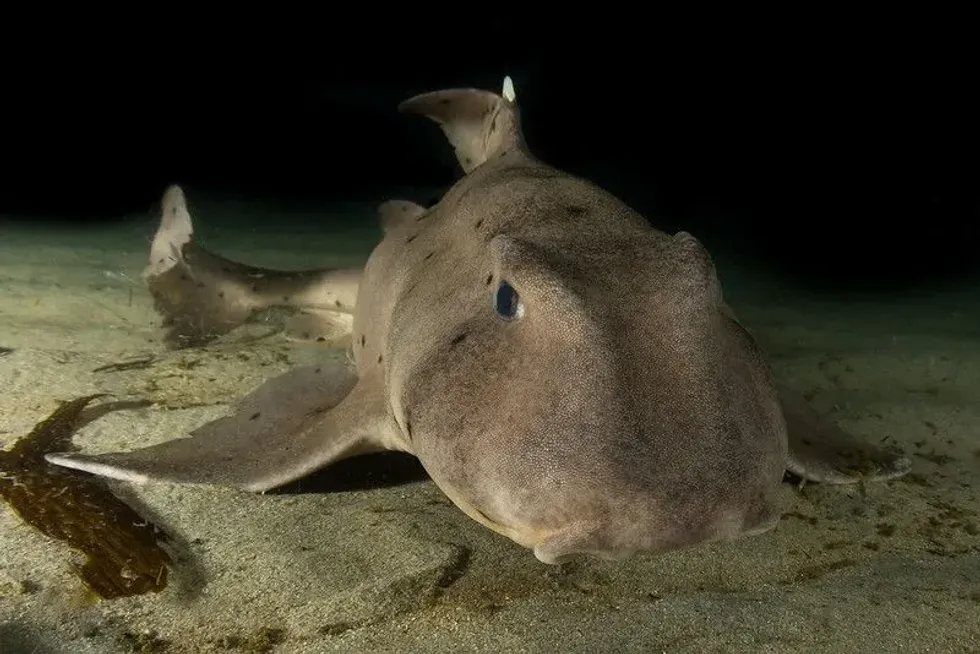
How cute are they?
Horn sharks, belonging to the species of bull sharks, have a tiny, cylindrical body with varied coloration and tiny spots. These characteristics make them absolutely cute creatures and iridescent to look at.
How do they communicate?
Horn sharks are known for communicating through basic auditory, visual, tactile and olfactory signals. They locate their prey through the sense of smell and electro reception. The males initiate mating by chasing the female sharks.
How big is a horn shark?
Horn sharks, being a member of bull shark species, have a cylindrical body with a wide head which is short in size. An average horn shark measures 1 m (around 3.3 ft) in length, some attaining a maximum height of 1.2 m (around 3.9 ft) and weighs around 10 kg (around 22 lb).
How fast can a horn shark swim?
Horn sharks are known as sporadic swimmers which preferably use its pectoral fins that are quite flexible and muscular in order to push its body through the bottom. They are found resting motionless at the day time, though they are alert all the time and swim rapidly when disturbed.
They very proactively roam searching for food after dusk. The largest documented horn shark movement is 16 km (around 9.9 mi) and are usually considered as slow swimmers.
How much does a horn shark weigh?
Horn sharks, belonging to the species of bull sharks, are small creatures with an average weight of 10 kg (22 lb).
What are their male and female names of the species?
A male is known as a 'male horn shark' while a female is known as 'female horn shark'.
What would you call a baby horn shark?
A young horn shark baby is known as a 'pup,' like all other shark babies.
What do they eat?
Horn sharks usually feed on mollusks that have hard shells, echinoderms and crustaceans. Horn sharks that are large in size mainly feed themselves on various sea urchins, especially purple urchins with short spines which stain the teeth and fins of these horn sharks purple.
Peanut worms, small bony fishes, cephalopods, and sea stars, are also included in the diet of horn sharks. Juveniles are known to survive primarily on small clams, sea anemones, and polychaete worms.
Are they dangerous?
Horn Sharks are harmless to humans under normal circumstances but may indulge in biting if disturbed and harassed. Their fin spines can inflict a painful wound and hence need to be handled with care. They can adapt well to captivity and as per the records, have been bred and maintained across public aquariums of the US.
Would they make a good pet?
Horn Sharks possess no potential threats to humans unless harassed or threatened. If handled with care, these sharks can make absolutely good pets as they can easily adapt to captivity and records have been found of horn sharks being bred and maintained in public aquariums across the US.
Did you know...
Horn sharks are very sensitive to light and spend almost all its life hidden in crevices, shadows, or dark waters. Their daily activities are controlled by the environmental light levels as they are found hunting at night and hiding in their favored shelter during the day.
They possess a tough exterior and sharp spines to protect themselves from predators. They also invest a lot of time in parental care to protect their eggs from larger fishes and sea animals.
What Is Different About The Horn Shark?
The horn sharks are closely related to the small head bull sharks. They are usually identified by its blunt head with high ridges above the eyes, curved snout, long mouth and sharp spines. They are differentiated from other sharks by the prominent ridges above both eyes which resemble horns.
The brown or gray back with white spots and a yellowish underside making them camouflage amid the dirt and rocks also provide them a unique feature among other sharks of the same species. The small size they possess make them similar in looks to a small domesticated dog.
How Did The Horn Shark Gets Its Name?
The scientific name of the horn shark is Heterodontus francisci. The genus name, Heterodontus, is derived from a combination of two Greek words, 'heteros' meaning different or other, and 'odus' meaning teeth.
The name is a reference to the molar, like arrangement of teeth in their mouth. The species name francisci is derived from the Latin form of San Francisco. The common name 'horn sharks' is named for the white spines at the front of both dorsal fins.
Here at Kidadl, we have carefully created lots of interesting family-friendly animal facts for everyone to discover! Learn more about some other fish including zebra shark, or fluke fish.
You can even occupy yourself at home by drawing one on our Horn Shark coloring pages.
We Want Your Photos!
More for You
See All
Bachelor of Arts and Law specializing in Political Science and Intellectual Property Rights

Anusuya MukherjeeBachelor of Arts and Law specializing in Political Science and Intellectual Property Rights
With a wealth of international experience spanning Europe, Africa, North America, and the Middle East, Anusuya brings a unique perspective to her work as a Content Assistant and Content Updating Coordinator. She holds a law degree from India and has practiced law in India and Kuwait. Anusuya is a fan of rap music and enjoys a good cup of coffee in her free time. Currently, she is working on her novel, "Mr. Ivory Merchant".
Bachelor of Journalism and Mass Communication

Ankit ShindeBachelor of Journalism and Mass Communication
Ankit is a Journalism and Mass Media graduate from the University of Mumbai. With experience in SEO, blog and article writing, and fiction writing, he is a versatile writer and content creator. In his free time, Ankit enjoys reading, writing, and listening to music.
Disclaimer
1) Kidadl is independent and to make our service free to you the reader we are supported by advertising. We hope you love our recommendations for products and services! What we suggest is selected independently by the Kidadl team. If you purchase using the Buy Now button we may earn a small commission. This does not influence our choices. Prices are correct and items are available at the time the article was published but we cannot guarantee that on the time of reading. Please note that Kidadl is a participant in the Amazon Services LLC Associates Program, an affiliate advertising program designed to provide a means for sites to earn advertising fees by advertising and linking to Amazon. We also link to other websites, but are not responsible for their content.
2) At Kidadl, we strive to recommend the very best activities and events. We will always aim to give you accurate information at the date of publication - however, information does change, so it’s important you do your own research, double-check and make the decision that is right for your family. We recognise that not all activities and ideas are appropriate for all children and families or in all circumstances. Our recommended activities are based on age but these are a guide. We recommend that these ideas are used as inspiration, that ideas are undertaken with appropriate adult supervision, and that each adult uses their own discretion and knowledge of their children to consider the safety and suitability. Kidadl cannot accept liability for the execution of these ideas, and parental supervision is advised at all times, as safety is paramount. Anyone using the information provided by Kidadl does so at their own risk and we can not accept liability if things go wrong.
3) Because we are an educational resource, we have quotes and facts about a range of historical and modern figures. We do not endorse the actions of or rhetoric of all the people included in these collections, but we think they are important for growing minds to learn about under the guidance of parents or guardians.
